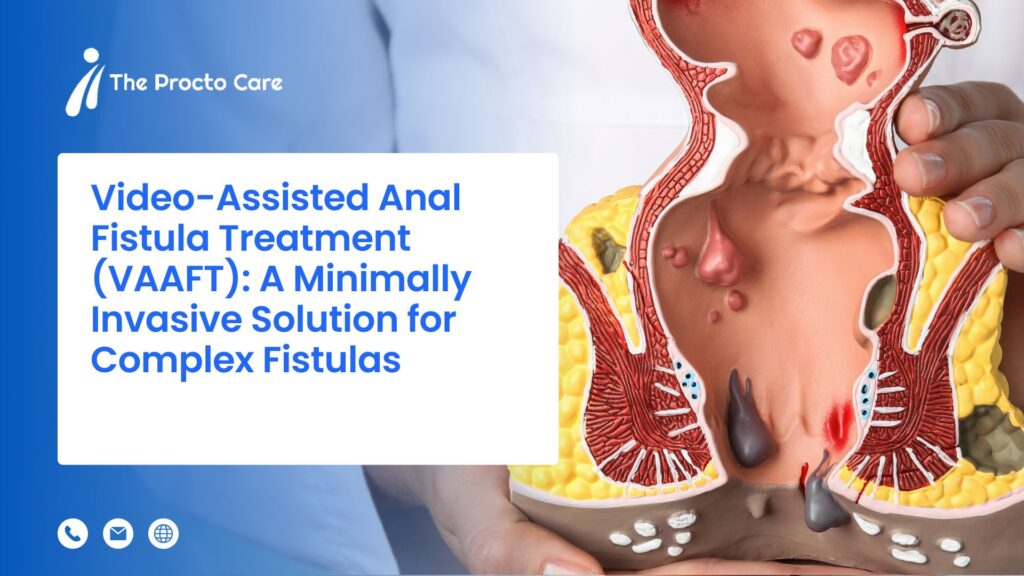Anal fistulas are a challenging condition that can significantly impact a patient’s quality of life. Traditional surgical approaches often involve extensive tissue dissection, leading to postoperative pain and a risk of incontinence. However, Video-Assisted Anal Fistula Treatment (VAAFT) has emerged as a revolutionary technique, offering a minimally invasive alternative for managing complex fistulas.
Understanding VAAFT
VAAFT, developed by Dr. Piercarlo Meinero, utilizes a fistuloscope to visualize and treat anal fistulas internally. The procedure is performed in two phases: diagnostic and operative. In the diagnostic phase, the fistuloscope is inserted to identify the exact pathway of the fistula, including secondary tracts and internal openings. Once mapped, the operative phase involves clearing the fistula tract, cauterizing unhealthy tissue, and sealing the internal opening, reducing the chance of recurrence.
Advantages of VAAFT
- Minimally invasive: No large incisions, preserving anal sphincter integrity.
- Real-time visualization: Enhances precision in treating complex fistulas.
- Reduced postoperative pain: Faster recovery compared to conventional surgery.
- Lower recurrence rates: Effective closure of the internal opening.
- Preserves continence: Unlike fistulotomy, VAAFT minimizes damage to surrounding structures.
Limitations
While VAAFT is highly effective, its success depends on fistula complexity and surgeon expertise. Recurrence may occur in cases with extensive branching tracts. Proper patient selection and post-procedural care are crucial for long-term success.
As a cutting-edge approach in proctology, VAAFT continues to redefine anal fistula management. For expert guidance, consult a specialized surgeon to determine its suitability for individual cases.

